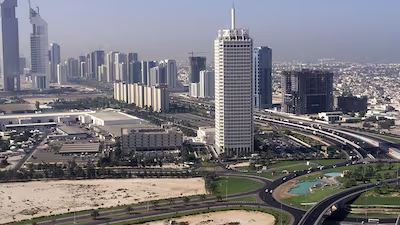
Dubai World Trade Centre, pictured in 1999, is on the new Modern Architectural Heritage of the UAE initiative. AFP
Dubai World Trade Centre, pictured in 1999, is on the new Modern Architectural Heritage of the UAE initiative. AFP
UAE launches initiative to preserve the nation's modern architecture
The project will highlight the historical importance of buildings that have defined the country's development


